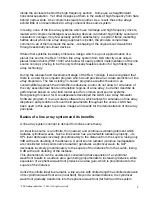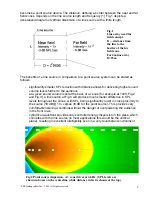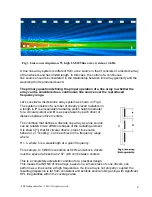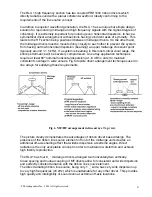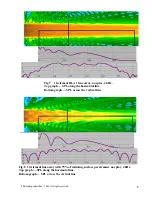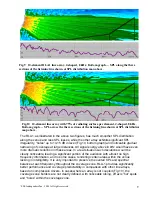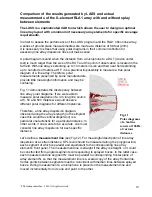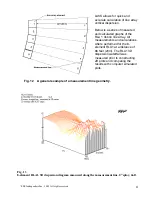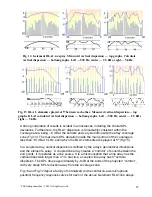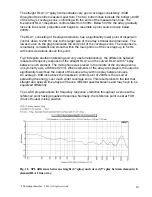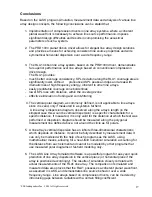
' SLS loudspeakers Inc., 2002. All rights reserved.
7
Comparison of vertical coverage pattern of the RLA1 and compression
driver based line array
LASS Line Array Simulator Software allows for very a vivid demonstration of the
difference between ribbon line source concept and other line arrays which do not provide
a coherent, flat wavefront.
Below, are images generated for the 10-element RLA1, with each element being 17” high
and a 10-element line array of the same size with curved wavefronts. It has been
demonstrated [2] that the effect of gaps between transducers very closely resembles the
effect of curved wavefronts, when a wavelength approaches _ of the curvature. In fact, it
could be geometrically illustrated, that a line array with series of curved wavefronts (Fig.5
A, B) can be modeled with an array of flat pistons with gaps between them. For this
particular simulation, a line array with 75% of its radiating area (filling coefficient), was
chosen.
The total height of both of these 10-element line arrays is 16.8 feet and a simulation field
is extended to 150 feet. Dark lines represent hypothetical listening planes.
LASS allows for generation of SPL distribution diagrams along these planes. The
particular line arrangement, depicted below, illustrates SPL coverage consistency along
the “venue” on the axis of the arrays and across the coverage zone, along the line parallel
to the array, at a distance 60 feet.
It is clear after observing Fig.7 and Fig.8, that the RLA1, being a truly coupled array, has
far superior coverage consistency along the venue and across the vertical coverage zone.
The level of ripple is significantly larger for the array with less radiating percentage or
having radiating segments with curved wavefronts, such as generated by compression
drivers. Such an array also has a very irregular and difficult to predict, coverage zone
border with noticeable narrowing of the coverage “corridor” with distance.
Another simulation (Fig.9, Fig.10) depicts a vertical view of the same line arrays, shaped
in a J-type figure, which is common for sound reinforcement applications. The simulated
venue is 157 feet long and is split into three listening areas with corresponding listening
lines.


